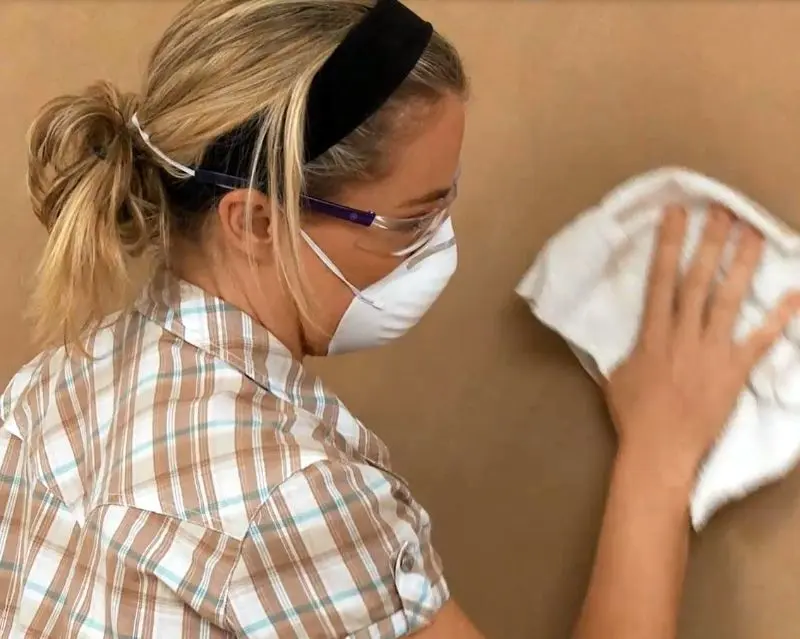
Dulux Acratex® help centre
Our home of technical tips, FAQs, care and maintenance guides and more.
Product & System Guides
Download the PDF below for updated information on our products, application, common concerns and helpful tips.
Find out what the nine steps to keep your Dulux® Acratex® Acrylic Texture Coating looking great.

Technical notes
Download the PDFs below for updated information on our products, application, common concerns and helpful tips.
Technical notes
Find out how to best manage the removal of mould and algae on exterior surfaces in order to maintain the home.
Expansion joints are controlled points installed in a building to allow for movement due to temperature changes, ground settlement or earthquakes. Find out all the essential tips for expansion joints in our technical notes.
Light reflectance value (LRV) is the proportion of light that a surface reflects compared to the amount of light that falls on that surface. Find out all you need to know in our technical notes.
Product and Safety Data Sheets
Get detailed information about the physical and chemical properties along with product specifications of our products.
Dulux are pleased to supply branded Masterspec specifications for many Dulux coating systems.
A Safety Data Sheet (SDS), is a document prepared by the manufacturer that details information with respect to the physical and chemical properties of the product.
Dulux BIM Solutions
Dulux BIM Solutions provides easy to use BIM content and Add-Ins so you can add Dulux colours and product ranges to Autodesk® Revit® and GRAPHISOFT® Archicad® models quickly and simply.
Dulux
BIM Solutions
The expanded offer now includes more than 6,500 colours and product ranges from Dulux World of Colour, Dulux Powders Coatings, Protective Coatings, Acratex® and Intergrain Timber finishes, that are available in a download option to suit your needs. And they’re FREE! Dulux BIM Solutions, Inspiring Creativity.
Frequently asked questions
"Render" means cement render, sometimes just painted with a thin paint topcoat. "Acrylic Texture" means the system from the substrate up is an integrated, flexible, multilayer polymer system (not rigid cement render).
An AcraTex Texture System is permanent. Like all surfaces exposed to the elements, preventative maintenance will keep it looking and performing at its best.
As a rule of thumb, wash the surface down every 12 -18 months (more often in seaside locations). This removes surface contaminants and forms an inspection routine. Check other building-related elements at the same time. Look for any areas of water ponding near walls, any loose or cracked sealant at joints and around windows, debris accumulated against walls, the state of gutters and timber, any signs of moisture under eaves; all elements that routinely maintained and corrected early will extend the life of all building elements.
Ultimate Life Cycle costs of the total facade system are optimised when AcraTex AcraShield (the Final Weatherproofing topcoat) is re-applied after 7-10 years. This ensures the integrity of the weather proofing system and provides the opportunity to address typical longer term building maintenance issues - such as building movement. Preserving the investment is just one good reason, secondly a "10 year refresh" maintains the properties visual impact "as new".
You can update at extended 7-10 year maintenance intervals or at any time. Dulux recommends AcraTex AcraShield. This is a high build (2-3 times normal paint), flexible coating which is applied like normal paint.
The surface is very resilient. AcraTex full acrylic systems have a "shock absorbing" effect compared to hard, brittle render, but can still be damaged. If it's a minor blemish (just to the surface layer), then this can be touched up with the same AcraShield outer skin layer that was applied at construction time. In residential projects, agree with your builder to leave a "maintenance pack" including a portion of the AcraShield topcoat used on the project. Blemishes can be touched up by "brush & sponge" method, diffusing the repair to blend in. If the damage goes through the coating (e.g. a corner is physically broken by impact), then this can be repaired, but may require more materials. Ultimately it may be more efficient to call a coating expert for advice.
Organic growth generally requires 2 elements: a nutrient (or food source) and moisture. The coating surface can't "grow mouldy". Where you see mould on a surface you'll need to look for the causes - generally dirt accumulating on the surface (containing contaminants or the "food source") and excess moisture usually leaks or poor drainage allow the moisture level to stay permanently high. Once you've fixed the causes, there are various surface cleaning agents available to then treat the resultant mould. Check the instruction carefully for safety and suitability on painted surfaces, then test a small area first to ensure no staining occurs. Most importantly, mould on any surface should not be left too long before treatment as staining can occur.
Access technical product information and create project specifications.
Explore more than 4800 colours, including new exciting colours and paint finishes with colour values to match your colour specification.
Dulux BIM Solutions provides easy to use BIM content and Add-Ins so you can add Dulux colours and product ranges to your project designs.





